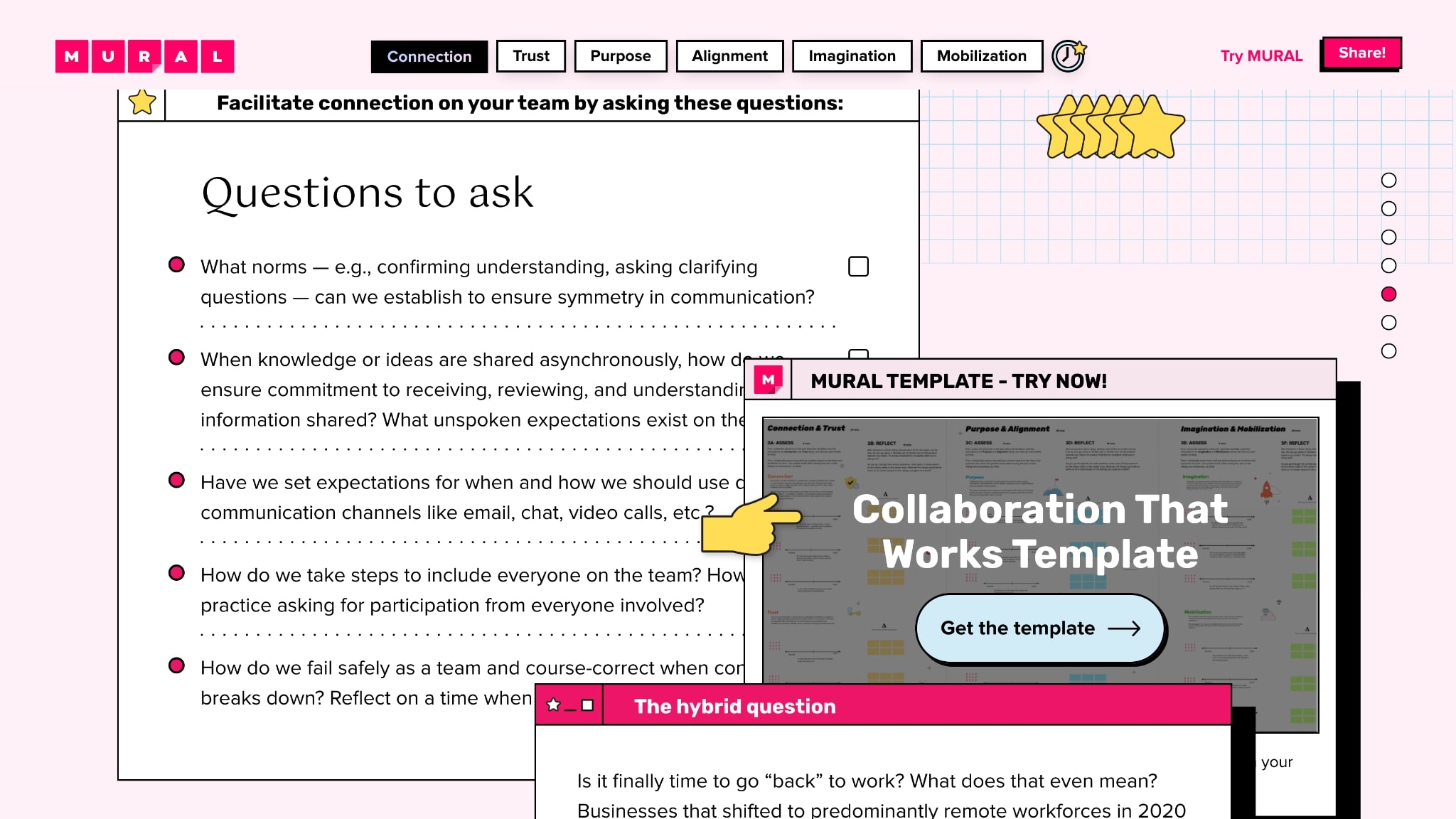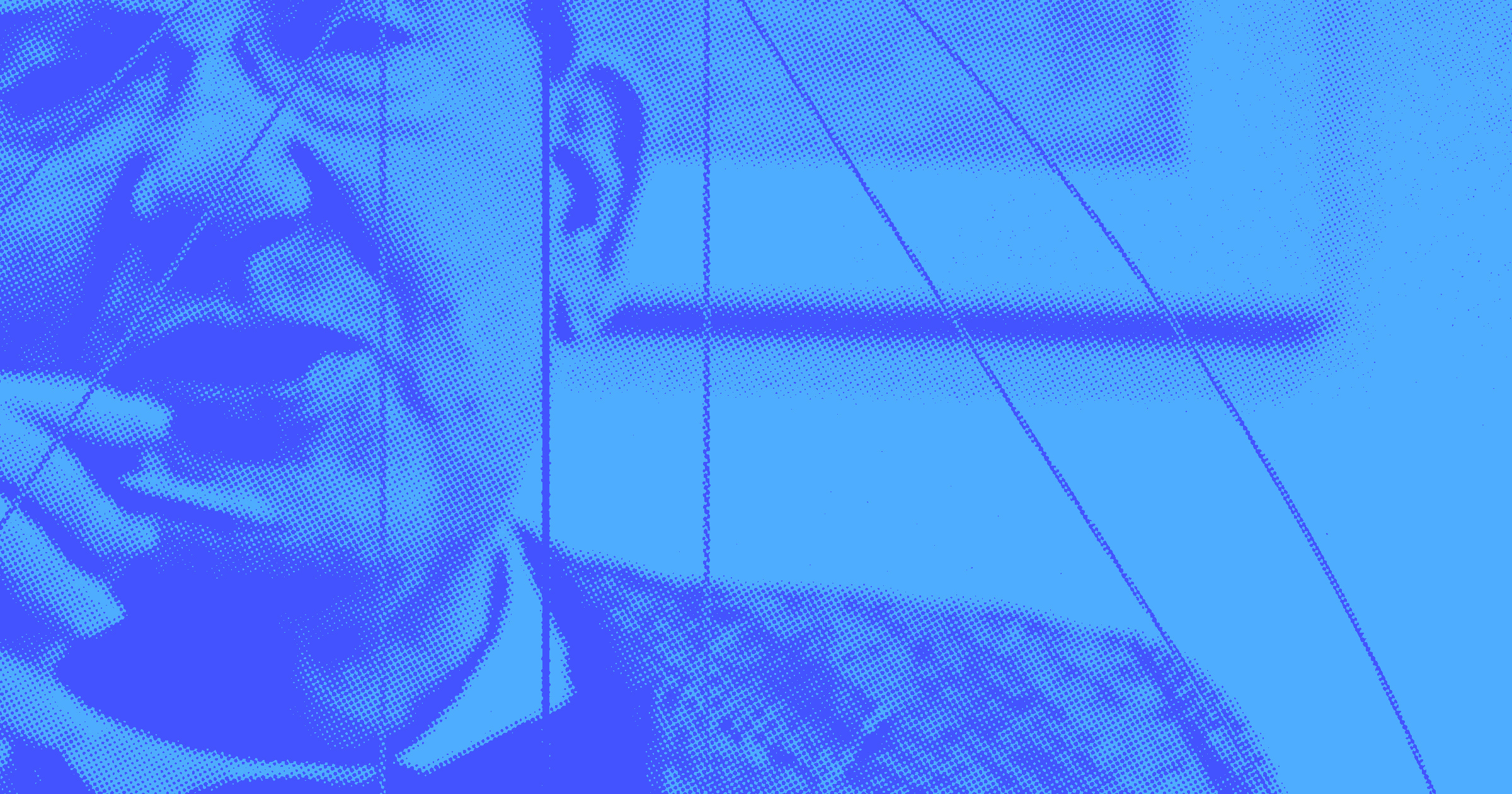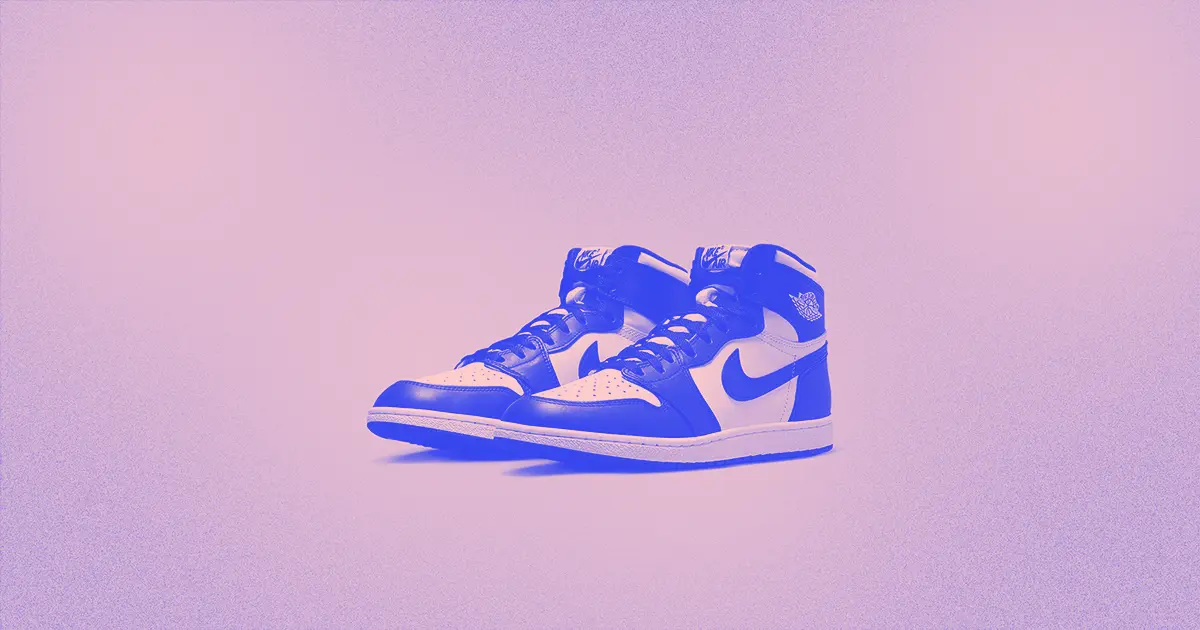Jessica Rosenberg started as Head of Brand and Creative at a time when MURAL was seeing explosive growth.
When Jessica started at MURAL, a company that makes software to support visual collaboration, the design team was small and already beginning to get swamped with creative work. She needed to grow her design team fast. “You really need to plan ahead of time,” Jessica said, “because the more people that join across the org, the more creative requests that come in, the more work there is.”
With MURAL, Jessica had the opportunity to create and grow the design team she wanted from the ground up — from hiring to execution. She established her team by approaching the planning like she would a design project. She maintained her team with supported creative play and collaboration and grew her team with a structure that enables focus. Here are her insights into how to successfully use a time of growth to research and build a structure where your design team can flourish.
Plan your design team’s growth like a creative project
Jessica approached establishing and building her design team the same way you’d tackle a design problem — research your project, collaborate with your team, use visual tools to draft a structure, then populate that structure with details that bring it to life.
Research your project
In order to start hiring effectively and pinpoint the types of specialists who would be needed, she first had to assess what the demands would be of her team. This meant researching creative needs across the company by collaborating with other team leads. “While planning the hiring roadmap, it was important — crucial — to assess what specialties were needed and for what types of projects.”
She spoke to marketing, product, community, and the people team and tried to understand what types of creative opportunities existed, what types of work would be coming in, and in what volume. This research helped make sure the new hires she brought on had the skills that would be needed most.
Draft your team structure
Next, she had to draft a structure for her team. She used MURAL to visualize how her team could be organized and see exactly what roles would be needed. “Once those needs and opportunities were identified, I began to really design..., like it was a design project in and of itself, an org chart (in MURAL, of course).”

She also created a working template org chart that anyone can use.
With the chart, Jessica could visually sort those teams into specialties — visual design, art direction and motion, brand design, and web. Then, she planned the roles she would need to hire for as well as the required areas of specialization.
Populate your structure
Next, she began the process of hiring her team, populating that structure with the color and energy of the talent she found. Since her team was fully distributed globally, she wasn’t limited by geography when seeking the strongest talent. “This flexibility allows for a more diverse talent pool in cities that might not get these types of job opportunities.”
Her structure was based on collaborative work, so during the hiring process, she looked for traits that would indicate that candidates would be able to work successfully in that environment. “The top of my list is that people come into the company and the team that are humble and down to earth and no ego... It really makes for better collaboration, better feedback, better team dynamics across the board.”
She also made sure to build in room for future growth. “I’m thinking of next year and beyond what the team might look like... Really relying on data and metrics to help inform how we make decisions.”
Give your design team space for playful, creative action
It was also important to Jessica that she could hold space for the team to be able to do proactive, creative work — not just fulfilling other people’s ideas but the freedom to conceptualize and imagine their own projects. These types of projects don’t tend to come in as an Asana request. “That was part of the impetus for growing out this large team was to be able to support all of the incoming requests, but also just to be creative on our own too.”
If free creative time isn’t intentionally set aside, schedules will quickly fill with busy work and immediate needs, and your team can risk missing out on the possibility of creating more innovative work. “For me, it’s having the space to think and tinker and play,” said Jessica. “And it’s even greater if those types of projects have significant business impacts as well.”
Take ownership of a team project
One project was initially brought to them by the Content and Campaigns team, who were envisioning a downloadable ebook about collaboration. She knew the creative team could do better than a PDF, so she gave them time and space to play. “It went from an ebook to this full-on bells-and-whistles Webflow interactive landing page... We had so much fun with the specific project, the ideas just kept coming." The resulting page is interactive, animated, engaging, and full of easter eggs. The customer response was fantastic, and her team came out of the project energized and fulfilled.

Schedule time for connection
In order to collaborate creatively, a team needs to have a strong foundation of trust and communication. To do this, give your team unstructured time for connection. Since her team was remote, she set up regular unstructured Zoom time. “They’re just meetings with no agenda. People can come in, they can work, we play music, we chit chat, and it’s really a time and a space for folks to connect and get to know one another very informally.” Having this space for interaction helped to foster a sense of connectivity and culture for her team.
MURAL’s design team even created their own virtual office, and a template so others can create their own.




















The modern web design process
Discover the processes and tools behind high-performing websites in this free ebook.
Build a support structure for your design team that enables focus
If a designer spends most of their day wrangling project details, they won’t have much time or mental energy to do quality creative work. This means creative operations — the people who help field design requests, delegate projects, organize timelines, and furnish teams with the technology they need to get projects done — are vital to the success of your design team. “I’m a firm believer that all design and creative teams need the creative-ops function in order to create great work at scale.”
Jessica and her director of creative ops, Erika Kincaid, got to build their project management process from the ground up. They needed to understand which types and how many projects would be coming across their designers’ desks. They began by asking questions throughout the company like, “What do you anticipate needing from the creative team? How can we support you?” Then, they mapped out and prioritized those needs before delegating them.
Once they had a better idea of where to delegate tasks, they assigned four project managers to work closely with leads and creatives and to keep their assignments and deadlines on track.
With the help of project managers, “[Creatives] can focus completely on the work and not worry about when something is due or who needs to see what. We want to eliminate all of that stress from the actual doers on the teams so they can focus on making.”
Use tools that balance collaboration and specialization
As a design team gets bigger, its composition will naturally shift from being made up of generalists to bringing on more designers with specialized skill sets. Specialists bring focused skills to a team, but a project is never just about design — teams like marketing, sales, and editorial will frequently have a stake in the work your design team is doing. Those specialists will need to collaborate in order to fulfill your business needs. As a company that creates software for collaboration, MURAL understands the value of using tools that keep teams creatively connected.
Select tools with a flexible workflow
The MURAL design team selected Webflow as one of their tools of choice because its visual approach made it accessible to non-developers as well as specialists who can work on more complex designs.. Rosenberg says, “We live day to day in Webflow.”
Their Web Team lead, Pablo González Day, is a member of online communities focused on designing in Webflow, so he was able to mine those resources to find the best specialized Webflow designers, like Joshua Jacobs, to hire. Since the design team is very cross-functional, using both Webflow and MURAL as no-code tools makes it possible for members of different teams to participate directly in the creative process rather than being siloed in their specialties. Team-specific managers keep projects focused.
Don’t be afraid to seek specialized support
Calling in targeted outside support when necessary can help support a team during its growth phase. Jessica was able to call on Finsweet, an agency specializing in Webflow, to help them build a campaign landing page. “The goal in building out this team is really to be able to support all the requests across the board with minimal external support, but we have the support there if we need it — if we’re lacking in skill set or if we just need additional help.”
To grow a design team successfully, build a structure that reflects the strengths of your company
A blank page is the most intimidating place to start a creative process because creativity struggles to find a foothold without some structure. Creative operations, collaborative tools, and structured time for play all help give a jumping-off point from which your design team can begin crafting their most innovative work.
MURAL is a product that is designed to support creative collaboration, so Jessica’s approach was to create a team structure with collaboration and open creative time built into its fundamental process. “A design-led company like MURAL, they really prioritize design and creativity... Our brand is fun and playful, and we should really make everything that we create exude those traits.” Her use of tools, including her own company’s product and Webflow, embraced the spirit of the product they were creating and enabled her to design a successful team.
Understand what makes your company unique and build your processes to take advantage of and grow from those attributes. That way, you can give your design team a strong foundation and the space to make exciting and rewarding contributions that will benefit the entire business.
































